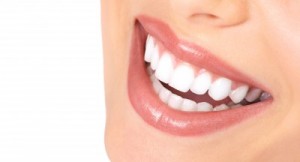 One of the ways to help you get started with your resolutions on the health front is to keep your oral health in shape. The steps involved are as simple as brushing your teeth twice a day every day, for at least two minutes, and seeing your dentist twice a year for check-ups.
One of the ways to help you get started with your resolutions on the health front is to keep your oral health in shape. The steps involved are as simple as brushing your teeth twice a day every day, for at least two minutes, and seeing your dentist twice a year for check-ups.
Gum disease usually occurs when one is unable to brush away the dental plaque that accumulates from the daily activities of eating and drinking. Over a period of time, the bacteria in the accumulated plaque will affect the teeth and gums, resulting in tooth decay and gum disease. Gum disease is painless in the early stages and people often pay no heed to bleeding gums, assuming this is normal since there is no pain associated with it. However, gum disease may gradually lead to abscesses, mobility of the teeth and is linked to a host of other medical issues, and thus cannot be ignored.
Over the years, the dental team at SDG has treated many patients with gum disease. In one particular instance, a patient’s gum had bled for many months and each time he saw his dentist, teeth were being extracted without him truly understanding his gum condition. This led him to seek a second opinion and he stumbled upon our website.
Our gum specialist (periodontist) identified that he had an advanced stage of gum disease but was able to provide much needed treatment for his gums. Eventually he only needed to extract one tooth and the remaining teeth were saved.
To illustrate how the gums, bone and teeth work together, think of the analogy of a house, where the bone would be the foundation of the house and the tooth is the structure of the house. The gums are the protective, pink tissue that cover the bony structures at the foundation. If the foundation is affected and there is bone loss, this causes the tooth to become mobile.
An X-ray will be required to determine the extent of the bone loss and to aid in planning the treatment for a patient with gum disease.
3 ways to treat gum problems:
- Schedule a regular dental check-up that includes scaling and polishing twice a year with your dentist
- If required, your dentist (or periodontist, i.e. gum specialist) will provide active gum treatment that includes deep cleaning to your gum (either non-surgically or surgically)
- In some cases, a graft (new piece of tissue) can be placed over the exposed root to bring the gum tissue back to its original form and position
If you would like to keep updated on the latest (and interesting) dental news, subscribe to our blog posts. Visit our website for more information or to make enquiries or appointments.





